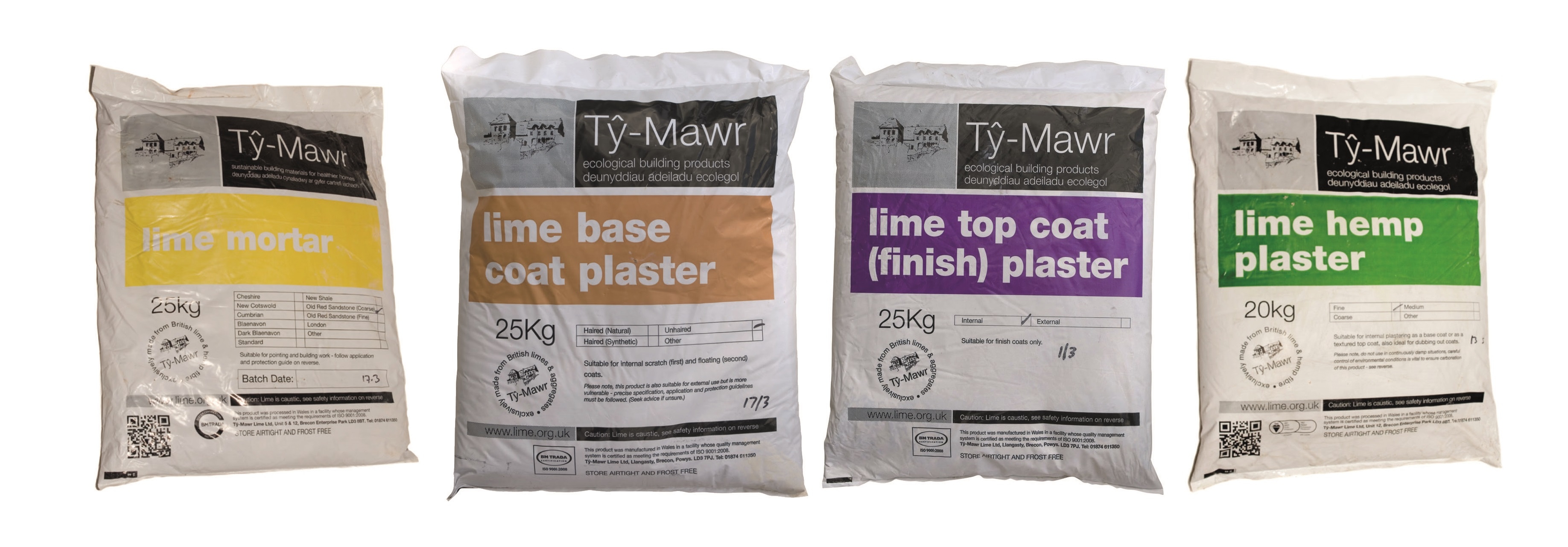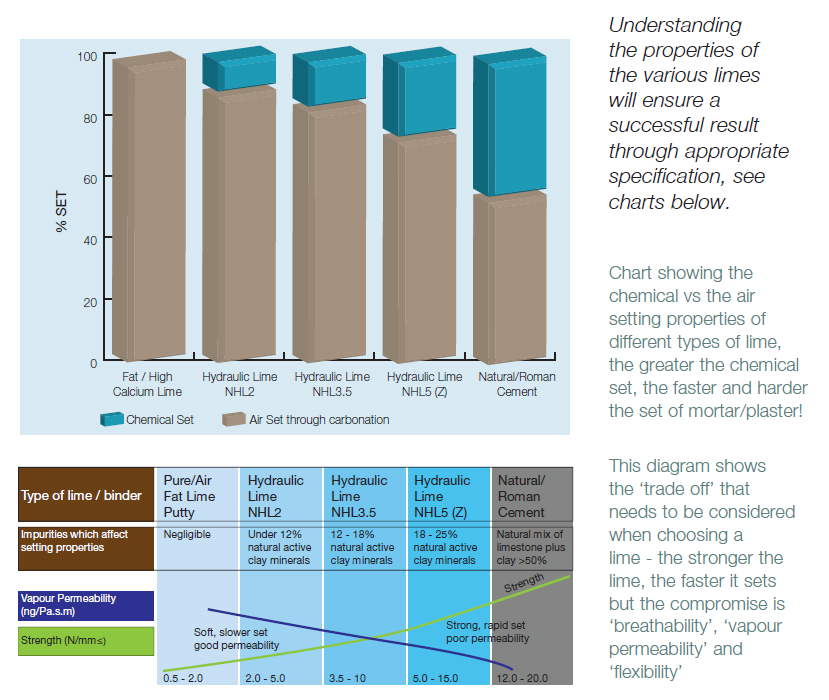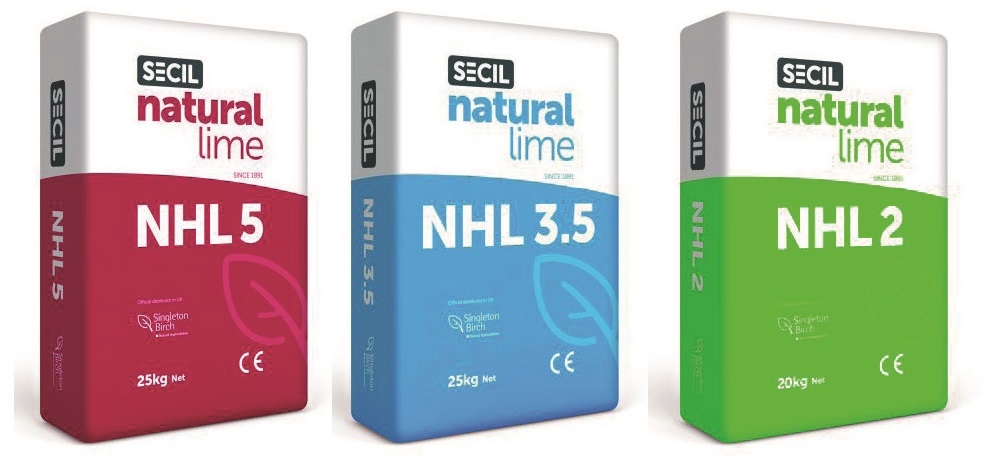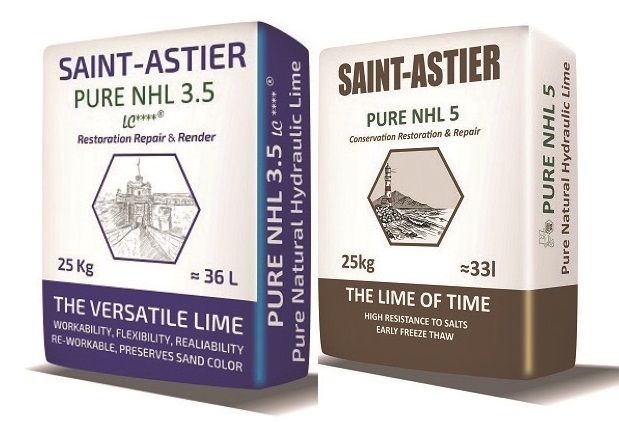Types of Lime
| There are many types of building lime on the market. It is crucially important to understand their differences and the way in which they perform, only then is it possible to make an informed choice about which lime to use for different applications and environments. |
|
Slaked/High Calcium/Putty/Air/‘Fat’ or Non-Hydraulic Lime This lime is produced by slaking fresh Quicklime in an excess of water. It is also known as non-hydraulic lime because it requires exposure to air in order to carbonate and does not set under water.
This lime is regarded as the most appropriate lime for old buildings or ‘softer’ substrates where maximum permeability, capillarity and flexibility is required.
Premixed ‘wet’ products are made from lime putty with the addition of an aggregate (or |
 |
| Hydrated or ‘bag’ lime This is the lime generally available in agricultural and builders merchants. It is a non-hydraulic lime produced by slaking Quicklime with a shortfall of water which results in a powder. It is generally considered to be an inferior product to the fat lime putty described above for a number of reasons but primarily because it starts to degrade from the moment it is made and can actually fully carbonate in the bag before use. Widespread use of ‘bag’ lime has given ‘lime’ a poor name because of the instances where it simply has none of its original properties left by the time the end-user works with it, hence it fails, dusts etc. If ‘bag’ lime is the only option, then it should be purchased as fresh as possible and left to soak for two days in clean water. Although the resulting product is chemically the same as ‘fat’ lime putty, it is physically different, in particular, it is less ‘sticky’. A cement mix with a shovel of hydrated/bag lime in it is not a lime mortar, in this instance, the lime is simply being used as a plasticiser. It should not be used in pre-1919 buildings! |
|
Natural Hydraulic Lime (NHL)
|
|
This ‘hydrated’ lime is different to the ‘bag’ lime as it is produced from limestone naturally containing clay and other impurities which enable it to set without exposure to air; it is therefore used for providing a faster initial set in more extreme conditions including under water. There are many types of hydraulic lime and they are categorised according to the following (NHL - Naturally Hydraulic Lime):
These limes have become increasingly popular over the last decade because of their comparative ‘ease of use’ and ‘strength’, compared to fat lime products, but see Choosing Lime for ‘trade-off’ chart. It is important to understand the building, Its location and construction materials to provide an informed specification for which lime to choose.
Hydraulic Lime (HL)
Formulated Lime (FL) These contain lime with hydraulic properties comprising air lime and/or NHL with added hydraulic and/or pozzolanic material – classified according to its compressive strength.
Natural/Roman cement
Pozzolans |
 |
| Today, hydraulic limes are more commonly used, sometimes wrongly, for increased set and strength. |


